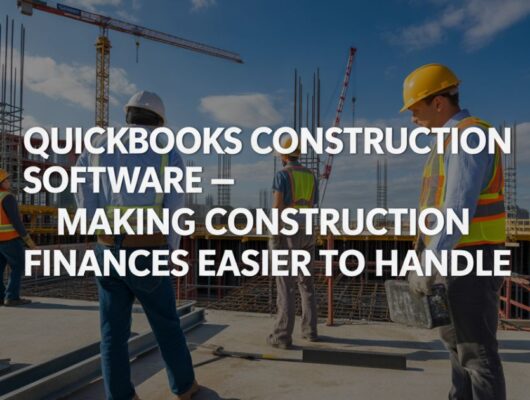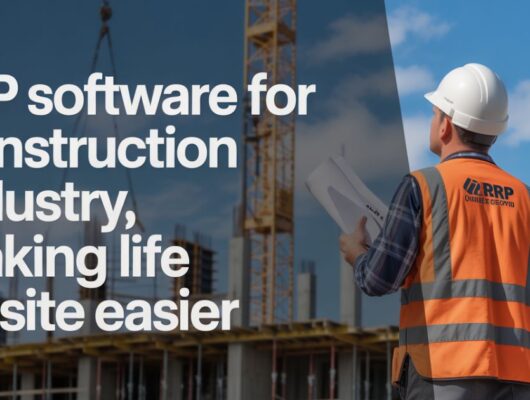There was a time when billing in construction meant chasing papers, printing invoices, and making endless phone calls. If you’ve ever worked in the field, you know how messy it could get, stacks of receipts, unclear payments, and clients asking, “Can you resend that bill?” Those days are fading fast.
Now, more contractors and builders are switching to construction billing software, a simple tool that keeps the money side of projects clear, fast, and under control. It’s not fancy or complicated. It just does the one thing every construction business needs: helps you get paid on time.
What Is Construction Billing Software?
Construction billing software helps builders keep track of money without the paperwork. You can make bills, record payments, and see project costs in one place. It’s easy to use and saves time. No need to jump between files or chase numbers. Some tools also connect with accounting apps, so everything stays linked. It just makes billing feel simple and clear, even on big projects.
Why Contractors Need It
Construction projects involve dozens of moving parts, suppliers, subcontractors, clients, and change orders. Managing billing manually often leads to confusion or missed details. That’s where construction billing software steps in. It helps contractors avoid underbilling, overbilling, or forgetting a payment stage altogether. You can set milestones, link invoices to project progress, and track everything in real time.
If a client delays payment, the system alerts you. If a subcontractor submits an invoice, it’s automatically added to your records. No sticky notes. No forgotten emails. And perhaps most importantly, it saves time, hours every week that can be spent on actual construction work instead of paperwork.
How It Works
Construction billing software is easy to set up. You add your project details, client name, timeline, and payment terms once. Then the system can make invoices based on progress or milestones. For example, when a job hits 25% completion, it can automatically prepare an invoice for that stage. It adds taxes, calculates costs, and reminds clients when payments are due. You can also attach proof like photos, reports, or certificates so clients can check and approve payments fast.
Top Features That Make a Difference
When picking construction billing software, look for features that make your daily work lighter. The best ones create and send invoices without retyping data. They help track progress, monitor expenses, and keep an eye on labor and materials. Some tools connect with accounting apps or project management systems, keeping everything in sync.
Many work on the cloud, so you can manage billing from anywhere, office, home, or site. You can also make reports that show where your money stands. It’s not just about faster billing, it’s about keeping your business steady and organized.
Helping Small and Large Businesses Alike
Whether you run a small setup or a big company, construction billing software fits easily. For small teams, it removes the stress of chasing payments or sorting spreadsheets. Everything, clients, payments, and costs, stays in one place. For larger companies, it keeps everyone on track, from field teams to finance. It also adds a touch of professionalism. When clients get clean, clear invoices on time, they trust you more. That small thing helps avoid disputes and keeps projects moving smoothly.
Transparency and Accuracy Matter
Money disagreements can ruin relationships in construction. Late invoices, missing details, or unclear breakdowns often lead to tension between builders and clients. Construction billing software solves that by creating transparent records. Every charge, every change order, and every payment is recorded and visible.
If a question arises, you can show proof instantly. That kind of clarity keeps everyone on the same side and helps projects move without unnecessary delays.
Choosing the Right Software
Before jumping to explore your options, please invest some time to find the answers to some questions that help you choose the best one according to your workflow.
Ask these questions:
- Is it easy to use for my team?
- Does it integrate with tools we already use?
- Can I access it from anywhere?
- Does the company offer good support?
A system that’s simple, reliable, and well-supported will serve you better than a complex one packed with features you’ll never touch.
Final Thoughts
Construction is tough work, but getting paid doesn’t have to be. That’s what construction billing software really does, it turns a messy, stressful part of the job into something smooth and easy to handle. It saves time, reduces paperwork, and helps you stay clear with your clients about money. Everything feels more organized and fair. In the end, good builders don’t just build well, they handle their payments well too. And with the right software, that side of the job becomes just as solid as the work you do on-site.








